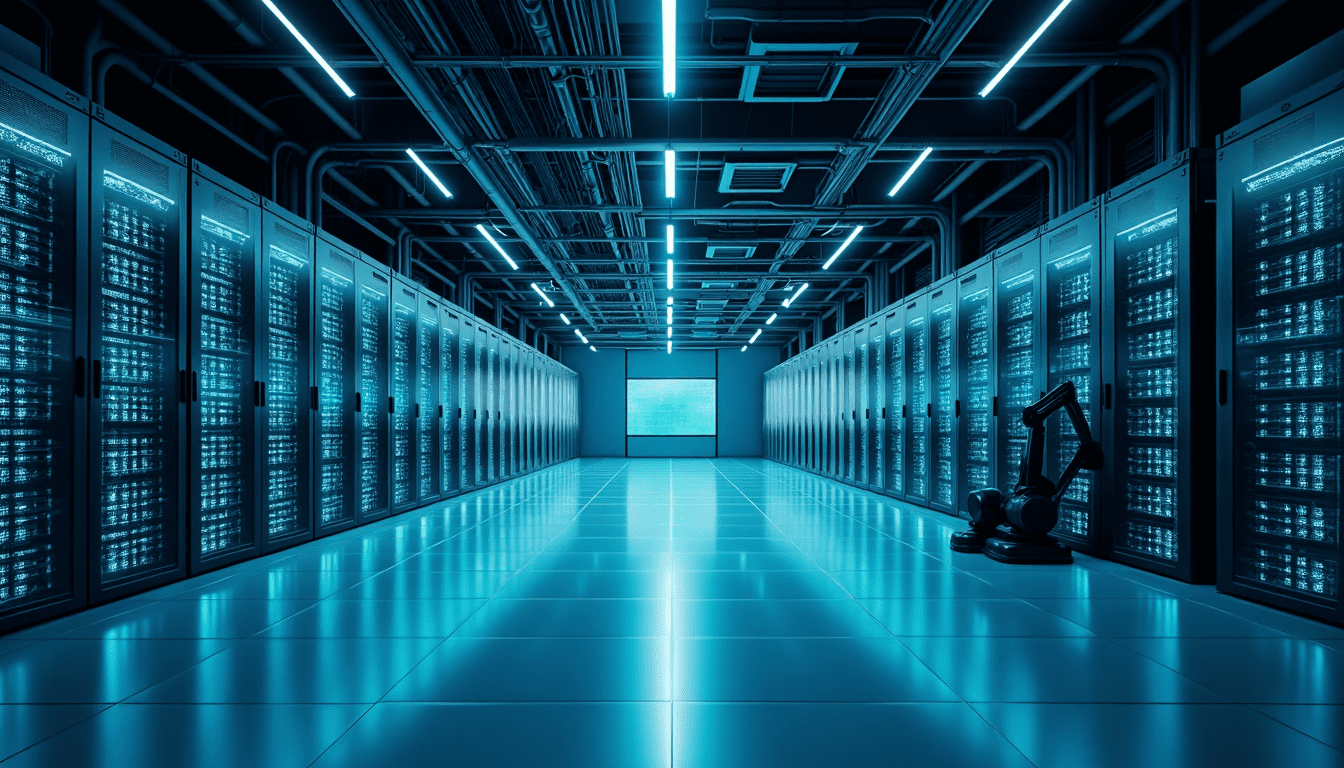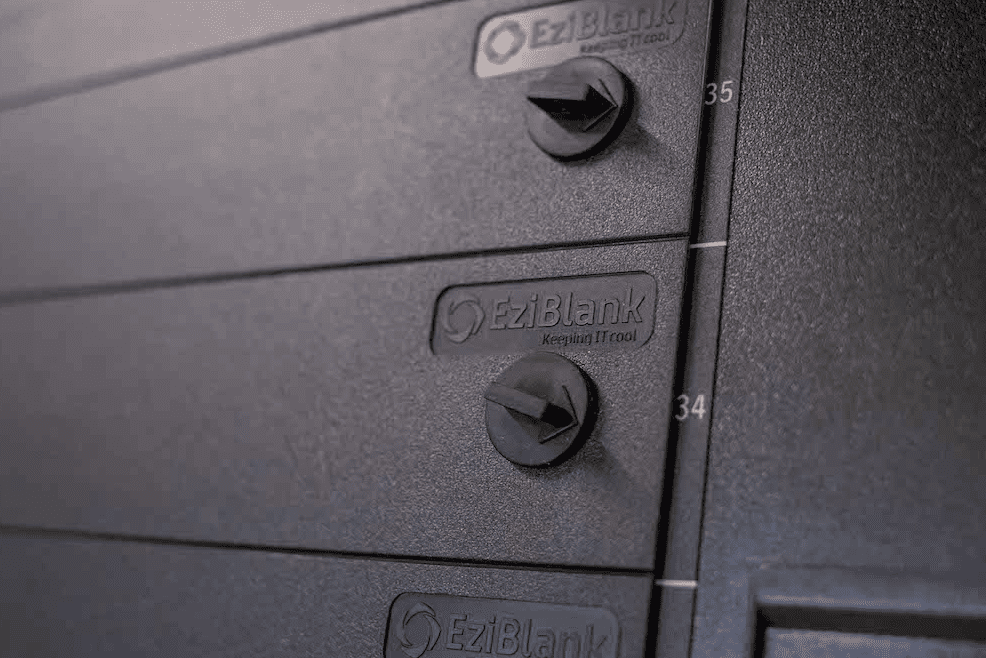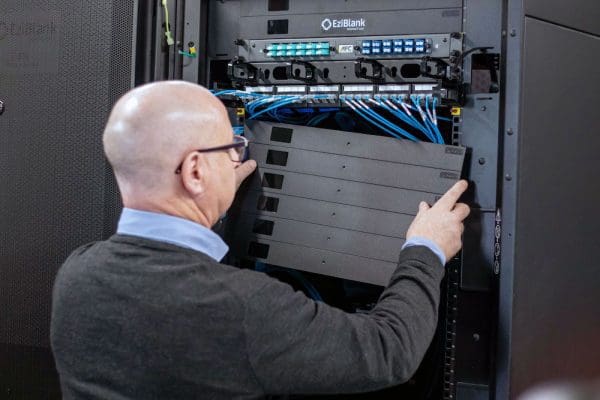Modern digital activities need powerful computing facilities called data centers. These tech hubs power our digital world and process millions of operations every second while storing massive amounts of data. Businesses and organizations must know how data centers work to succeed in today’s tech-driven world.
The World of Data Centers
The world of data centers includes many types that serve different purposes. Enterprise data centers support single organizations, while cloud facilities handle multiple clients’ needs. A data center’s core includes servers, storage systems, and network equipment that work together seamlessly. This piece examines data center types, their essential parts, and the standards that ensure their reliable operation.
Definition and Core Components of a Data Center
Data centers serve as physical facilities where organizations centralize their IT operations and equipment. These facilities handle data storage, processing, and application management. Modern businesses and organizations worldwide depend on these sophisticated systems that form the backbone of their digital operations.
What is a data center?
A data center serves as a specialized facility that houses computing and networking equipment. These facilities help organizations collect, store, process, and share massive amounts of data. Data centers have transformed significantly from simple server rooms into sophisticated environments. They now support virtual infrastructure that operates both locally and across multiple cloud platforms.
Key Components: Network Infrastructure, Storage, Computing Resources
A data center’s core components work together seamlessly to optimize data processing and storage:
| Component | Function | Key Elements |
|---|---|---|
| Network Infrastructure | Connects servers and enables data flow | Routers, switches, firewalls |
| Storage Systems | Maintains data accessibility | Hard drives, solid-state drives, tape storage |
| Computing Resources | Processes applications and workloads | Physical servers, virtualized servers |
| Cooling System | Keeping equipment at optimal temperature for efficiency | Blanking Panels, CRAC unit, fans |
The system integrates these components naturally. Network infrastructure aids communication between servers and storage systems, while computing resources deliver the processing power needed to run applications and manage workloads effectively.
Supporting Infrastructure: Power, Cooling, Security
Data centers depend on robust supporting infrastructure for their daily operations:
- Power Systems
- Uninterruptible power supplies (UPS)
- Backup generators
- Main distribution boards
- Emergency power systems
- Environmental Control
- Computer room air conditioners (CRAC)
- Heating, ventilation, and air conditioning (HVAC)
- Temperature monitoring systems
- Humidity control systems
- Security Measures
- Physical access controls
- Surveillance systems
- Biometric scanners
- Fire suppression systems
A reliable power infrastructure keeps operations running smoothly. UPS systems bridge power gaps until backup generators take over during outages. The facility’s environmental control systems maintain ideal conditions. ASHRAE standards recommend temperatures between 64.4°F and 80.6°F and relative humidity levels from 40% to 60%. Multiple security layers protect both physical assets and data through advanced surveillance and strict access controls.
Data centers track their efficiency through power usage efficiency (PUE) metrics. The industry average stands at 1.58. Smart airflow management through hot and cold aisle containment reduces cooling costs significantly, with savings ranging from 10 to 35 percent.
Types of Data Centers
Businesses classify data centers through their ownership, operational models, and management strategies that help them select the most suitable option for their needs.
Enterprise Data Centers
Enterprise data centers serve as private facilities that organizations own and operate to support their IT infrastructure needs. These environments are custom-built to align with an organization’s applications and processes. Companies select enterprise data centers based on several requirements:
- Better control over data security and compliance
- Custom network configurations
- Direct infrastructure management oversight
- Specific regulatory compliance needs
Managed Services Data Centers
Managed services data centers provide detailed third-party management of data center infrastructure. Professional teams oversee servers, storage, networking, and security systems. The service model has these core components:
| Service Component | Description |
|---|---|
| Infrastructure Management | Continuous monitoring and maintenance of physical systems |
| Technical Support | 24/7 skilled professional assistance |
| Security Operations | Advanced threat monitoring and protection |
| Compliance Management | Regulatory standard adherence and reporting |
Colocation Data Centers
Colocation data centers, commonly called multi-tenant data centers, serve as shared infrastructure spaces where businesses store their computing hardware and servers. The facilities give organizations these deployment choices:
- Retail colocation: Businesses rent individual racks or cage space
- Wholesale colocation: Companies lease larger dedicated areas
- Hybrid colocation: A mix of private infrastructure with shared resources
Cloud Data Centers
Cloud data centers and hyperscale facilities are massive hubs that power cloud computing platforms and big data storage. Amazon Web Services, Microsoft Azure, and Google Cloud Platform run these facilities to provide computing resources to millions of users worldwide. The hyperscale model helps companies quickly add capacity that works with their existing setup.
Data centers cater to different business requirements. Some organizations need full control of their infrastructure, while others want flexible options without managing facilities. Companies choose between these options based on their security needs, available resources, technical knowledge, and budget.
Data Center Tiers and Standards
Data center standards and tier classifications create a reliable framework to evaluate performance. Organizations can use these standardized metrics to assess and compare capabilities between facilities effectively.
ANSI/TIA-942 Standard
ANSI/TIA-942 standard provides detailed requirements for data center infrastructure. This globally recognized standard covers everything in:
- Telecommunications infrastructure
- Architectural and structural requirements
- Electrical and mechanical systems
- Security and fire safety protocols
- System redundancy specifications
Data Center Tiers Overview
| Tier | Description | Uptime | Annual Downtime |
|---|---|---|---|
| Tier 1 | Simple site infrastructure | 99.671% | 28.8 hours |
| Tier 2 | Redundant-capacity component site infrastructure | 99.741% | 22 hours |
| Tier 3 | Concurrently maintainable site infrastructure | 99.982% | 1.6 hours |
| Tier 4 | Fault-tolerant site infrastructure | 99.995% | 26.3 minutes |
The Evolution of Data Centers
Data centers have come a long way in the past fifty years. Their trip spans decades and showcases the most important changes in computing infrastructure and capabilities. These developments mirror technology’s continuous advancement and the changing needs of digital operations.
From Mainframes to Cloud Applications
| Era | Key Characteristics | Main Focus |
|---|---|---|
| 1940s-1960s | Mainframe Computing | Centralized processing |
| 1970s-1980s | Distributed Systems | Data reliability |
| 1990s-2000s | Client-Server | Network connectivity |
| 2010s-Present | Cloud Computing | Scalability and flexibility |
Modern Data Centers in the Multicloud Era
Cloud computing emerged in the 2000s and reshaped the data center world. Modern data centers now work in a complex setting with these key features:
| Aspect | Implementation |
|---|---|
| Infrastructure | Hybrid and multi-cloud environments |
| Efficiency | Advanced energy management systems |
| Security | Improved cybersecurity protocols |
| Scalability | Automated resource allocation |
Data centers are the lifeblood of modern digital infrastructure. They have evolved beyond simple server rooms into sophisticated environments, combining advanced computing resources with resilient security measures and streamlined power management systems.
Digital transformation shapes the future of data centers. The scene changes as businesses demand greater efficiency and sustainability. Companies must review their requirements carefully against tier classifications and industry standards before selecting or upgrading their infrastructure. This approach will give optimal performance while meeting the growing storage and processing requirements effectively.
FAQs
What are the different types of data centers?
There are primarily four types of data centers:
- Enterprise Data Centers – These are constructed, owned, and operated by companies to cater to their specific needs.
- Managed Services Data Centers – These data centers are operated by third-party companies that handle the management of the data center facilities.
- Colocation Data Centers – In these facilities, equipment, space, and bandwidth are available for rental to retail customers.
- Cloud Data Centers – These are operated by cloud service providers to offer wide-ranging cloud services.
What exactly is a data center?
A data center is a dedicated space where companies maintain and operate their critical applications and data. It houses computing resources like servers, data storage systems, and networking equipment, all of which are essential for the processing and storage of information.
How are data centers categorized?
Data centers are classified into four tiers, labeled I through IV. Tier I offers the most basic infrastructure with no redundancy, while Tier IV provides fully redundant infrastructure and the highest level of fault tolerance and reliability.
What do the different data center tiers represent?
Data center tiers are a standardized methodology used to define the uptime of a data center. The tiers are numbered from 1 to 4 and increase in reliability and redundancy as the numbers go up.



